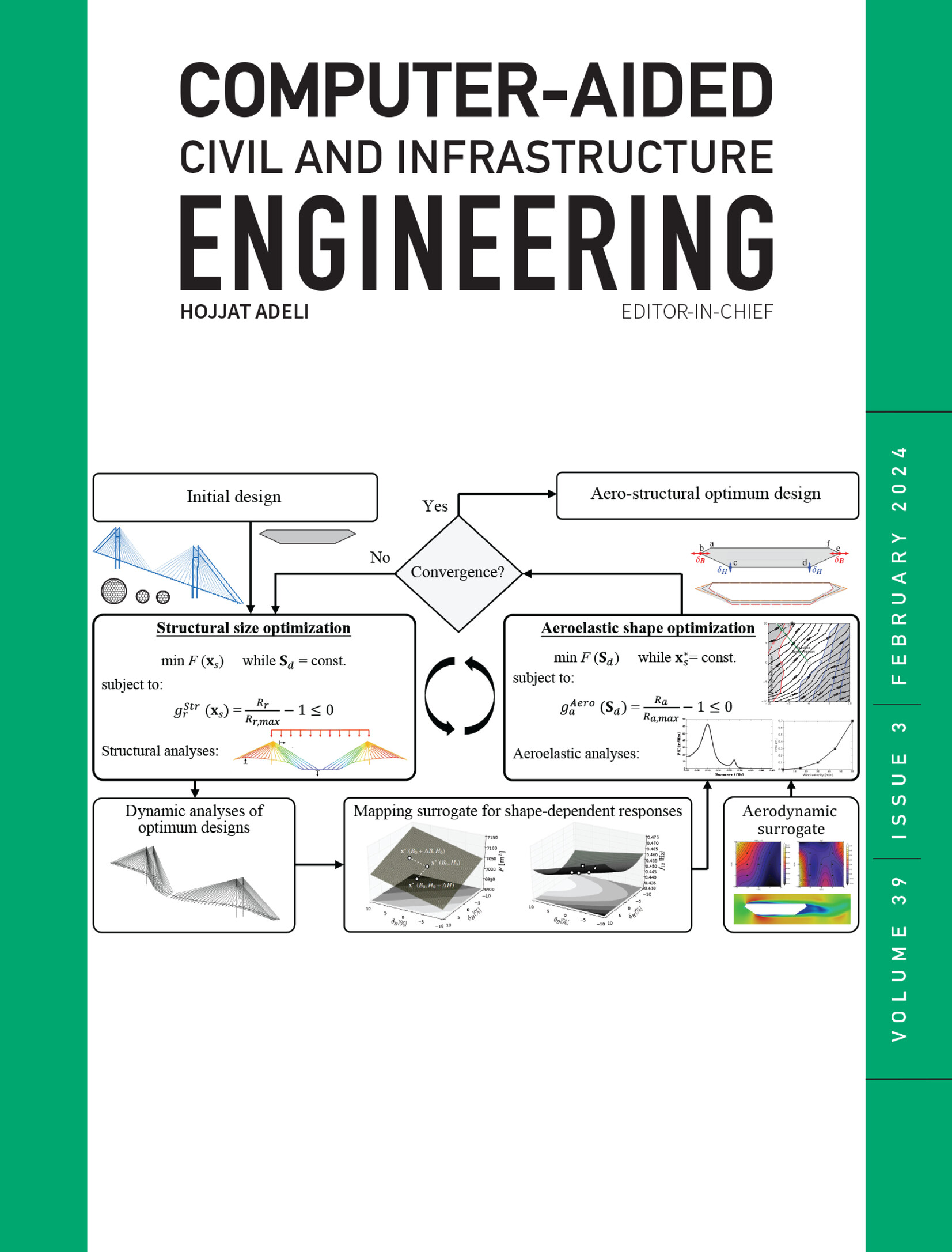基于主动协同目标摄影测量的海底沉管隧道对接定位
IF 9.1
1区 工程技术
Q1 COMPUTER SCIENCE, INTERDISCIPLINARY APPLICATIONS
引用次数: 0
摘要
深水、远洋、无人是海洋工程发展的必然趋势,水下定位系统对精度、实时性、环境适应性等方面的要求越来越高。主流水下定位方法面临多径效应、成本、水深、水质等限制,难以满足多样化需求。本研究提出了一种基于主动协同目标的水下摄影测量解决方案,该方案将光学硬件与智能算法相结合,可在复杂的海洋环境中实现毫米级定位。具体而言,系统通过多参数关联,对双目视觉摄像头、LED阵列目标和辅助光学等硬件配置进行了设计和优化,确保了定位的连续性和稳定性。在算法层面,通过时空分布分析、期望模板匹配、物理光强建模、几何构型约束等建立多级图像处理模块,有效克服了协同目标的动态遮挡、散射退化和特征提取误差。在标准测试单元中,该系统的角精度为0.24°,测距精度为0.72 mm。目前已经开发了许多辅助沉管隧道对接的定位系统,即使在动态高浊度条件下,其绝对定位误差仍优于5mm,证明了其有效性。本文章由计算机程序翻译,如有差异,请以英文原文为准。
Undersea immersed tube tunnel docking positioning via active cooperative target photogrammetry
Deep water, distant sea, unmanned is the inevitable trend of the development of marine engineering, the underwater positioning system for the accuracy, real‐time, and environmental adaptability of the aspects of the increasingly high requirements. The mainstream underwater positioning methods face limitations such as multipath effects, cost, water depth, and water quality, making it difficult to meet diverse needs. This study presents a novel underwater photogrammetry solution based on an active cooperative target that combines optical hardware with intelligent algorithms to achieve millimeter‐level positioning in complex marine environments. Specifically, the system designs and optimizes the hardware configuration, including binocular vision camera, LED array target, and auxiliary optics, through multi‐parameter association to ensure the continuity and stability of positioning. At the algorithmic level, a multilevel image processing module is established through spatiotemporal distribution analysis, expected template matching, physical light intensity modeling, and geometric configuration constraints, which effectively overcomes the dynamic occlusion, scattering degradation and feature extraction errors of cooperative targets. In a standard test cell, the system achieves an angular accuracy of 0.24° and a ranging accuracy of 0.72 mm. A number of positioning systems have been developed to assist in the docking of submarine immersed tube tunnels, and the absolute positioning error is still better than 5 mm even under dynamic high turbidity conditions, which proves its effectiveness.
求助全文
通过发布文献求助,成功后即可免费获取论文全文。
去求助
来源期刊
CiteScore
17.60
自引率
19.80%
发文量
146
审稿时长
1 months
期刊介绍:
Computer-Aided Civil and Infrastructure Engineering stands as a scholarly, peer-reviewed archival journal, serving as a vital link between advancements in computer technology and civil and infrastructure engineering. The journal serves as a distinctive platform for the publication of original articles, spotlighting novel computational techniques and inventive applications of computers. Specifically, it concentrates on recent progress in computer and information technologies, fostering the development and application of emerging computing paradigms.
Encompassing a broad scope, the journal addresses bridge, construction, environmental, highway, geotechnical, structural, transportation, and water resources engineering. It extends its reach to the management of infrastructure systems, covering domains such as highways, bridges, pavements, airports, and utilities. The journal delves into areas like artificial intelligence, cognitive modeling, concurrent engineering, database management, distributed computing, evolutionary computing, fuzzy logic, genetic algorithms, geometric modeling, internet-based technologies, knowledge discovery and engineering, machine learning, mobile computing, multimedia technologies, networking, neural network computing, optimization and search, parallel processing, robotics, smart structures, software engineering, virtual reality, and visualization techniques.

 求助内容:
求助内容: 应助结果提醒方式:
应助结果提醒方式:


